


“Confront people with annihilation, and they will survive. Plunge them into a deadly situation, and they will live. When people fall into danger, they are able to strive for victory,” said the famous ancient Chinese military general, Sun Tzu. The military leader, credited with many victories for his rulers, enshrined these words in his famous book, ‘The Art of War’ also called ‘Ping-Fa’ in his native language.
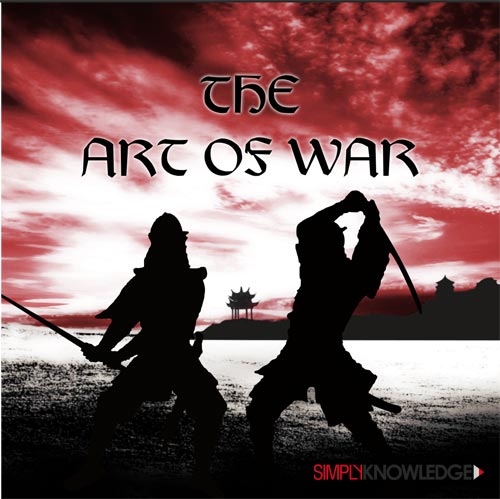
His quote continues to be extensively used in various types of modern day warfare. Yet these words by Sun Tzu bear a deeper meaning: This quote is the first recorded statement that deals with two primordial human instincts: Fear and Survival or the more basic- Life and Death.
That human’s fear death is a well proven fact. Death that occurs violently and strikes when one is in full control of emotions and senses is most dreaded. It is this terrifying death and the inherent, accompanying fears which are the two main human thoughts Sun Tzu aptly manipulated and demonstrated successfully, to lay the basis of two major study streams- Fear Psychology and War Psychology. These two branches of psychology continue to be utilized with astounding results to date by insurance companies peddling fine-print riddled policies to complex stratagems of war drawn in top secret boardrooms of militaries.

Sun Tzu’s exact year of birth is as mysterious as his war strategies: Written records do not exist. However, an erudite but vague ancient Chinese text called ‘Shiji’ or ‘Records of the Grand Historians’ claims, Sun Tzu lived in an era called as ‘The Spring and Autumn Period of China,’ dated between 770BC and 476BC. His true identity remains unknown. The name Sun Tzu means ‘Grand Master’, in ancient Han Chinese.
Modern day historians who studied ‘The Art of War’ deduce the book was completed between 470BC and 220BC- based on various features such as the type of weaponry used and writing style, among others. It is therefore likely that Sun Tzu was born around 450BC and lived up to 380BC. During these years called ‘Era of the Warring States’, China witnessed unprecedented political and social upheavals due to small kingdoms and territories incessantly battling one-another to expand their dominions. They attribute this loss of records related to Sun Tzu’s birth and other details to this turmoil.
Despite, historians have laboriously compiled a sketch of what Sun Tzu’s life would have possibly been, using advanced translation technologies coupled with extensive studies into ancient China and its culture.

Historians, military analysts, psychologists and history enthusiasts agree that Sun Tzu was a Chinese general who served as a war strategist and military leader during the reign of King He Lu, the ruler of the Wu state, around 470BC.
Sun Tzu, historians assume, was born in the city called Qi, in Wu state of ancient China. Details including his parentage, childhood, education, family life and rise to prominence as a general and military strategist par excellence, various other aspects of life remain shrouded in mystery. Modern day Chinese historians and their counterparts across the globe continue to piece Sun Tzu’s biography to date, with limited success. Translations of Sun Tzu’s works began about 300 years ago and are ongoing.
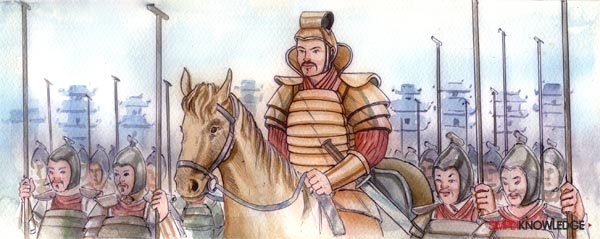

Ancient Chinese historian and chronicler, Suma Qian, in his ‘The Records of the Grand Historians’, cites the ‘Era of the Warring States’, wider acceptance of Taoism and military expediency as the three precursors that impelled Sun Tzu to devise and later, author ‘The Art of War.’ During this extremely turbulent period, the seven main kingdoms of ancient China, the Jin, Chu, Qin, Qi, Wei, Yue and Wu were at loggerheads. These kingdoms, along with their vassal states, attacked one-another to win large swathes of territory to unify China under their influence.
Sun Tzu is said to have began his military career as an ordinary soldier in the army of King He Lu of Wu, whose state was among ones frequently at war.
Valour combined with exceptional tactics in ambush, espionage and counter-espionage, surprise attacks on enemy camps and use of various unconventional battle strategies at the time, distinguished Sun Tzu from other soldiers. Despite his young age, he rose through the rank and file of the Wu army and attained some of the highest positions in the military echelons. A tested and efficient strategy utilized by Sun Tzu was to learn the vulnerability of foes and the extent of their tactical disadvantages. “The opportunity to secure ourselves against defeat lies in our own hands, but the opportunity of defeating the enemy is provided by the enemy himself,” he said. This profound observation culminated into several war victories for Sun Tzu.
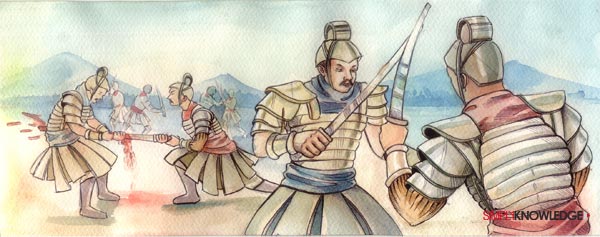

Upon hearing of these exploits, King He Lu wished to personally meet Sun Tzu and learn more about his war techniques, which had proved so effective. The king summoned Sun Tzu and asked him to demonstrate his abilities before the royal court and his harem. Through this test, the ruler was trying to determine whether Sun Tzu merited a senior rank such as a general or commander of his military.
Sun Tzu, legend states, obtained King He Lu’s permission to conduct a mock military drill using the royal concubines, their maids and eunuchs used as guards, as ‘soldiers’. He divided these 180 women and eunuchs in two groups- posing as two opposing armies- each to be led by one of King He Lu’s two favourite consorts.

The two formations ready, Sun Tzu ordered the “troops” to march. The concubines burst into giggles, much to the amusement of King He Lu and his courtiers. The lugubrious Sun Tzu remained unshaken and warned the two queen “commanders” and their “troops” to obey orders or face dire consequences.
Hoping the drill would be taken more seriously this time, Sun Tzu once again ordered the mock armies to march. And to his despair, found the same results again as the women burst into cheerful laughter, attracting the general’s wrath.
Chronicler and historian Suma Chi En claims, that King He Lu of the Wu state, in 512BC, was diffident about the morale and combat efficiency of his troops and hence, permitted this exercise.
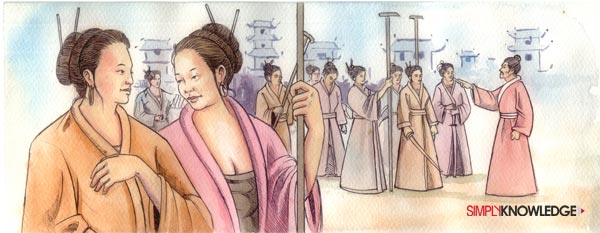

Sun Tzu ordered the royal guards to arrest the two queens- King He Lu’s favourite consorts- and behead them instantly. When the shocked guards failed to respond, Sun Tzu warned, they would also face the same consequence for disobeying an order, which led to immediate compliance.
However, King He Lu, fearing the loss of his two queens, vehemently pleaded to Sun Tzu to spare their lives. An unrelenting Sun Tzu had the two queens beheaded in public, sending a strong message to the Wu military that disobedience at any level will not be tolerated. An army under such conditions will be vigilant without admonishment, will carry out their duties without compulsion, will be devoted without constraint, will observe discipline even though they are not under close surveillance,” Sun Tzu told the king after the beheadings, emphasizing his point that absolute obedience by troops is supremely vital on a battlefield.
Despite his consternation over beheading of two beloved consorts, King He Lu immediately promoted Sun Tzu as the Commander-In-Chief of his military while asking him to draw war strategies that would rout enemies and expand the Wu kingdom.
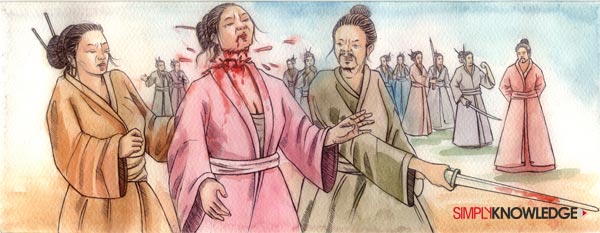

In ensuing years as general of the Wu armies, Sun Tzu won several battles against its foes. As a result, the Wu kingdom was able to retain sovereignty until 220BC, till a concerted conquest by the Qin dynasty succeeded in defeating and absorbing the warring states to form a unified China.

After leading several conquests against smaller states, Sun Tzu was able to defeat most adversaries of the Wu kingdom. Sun Tzu’s strategies had been put to practice in all these conflicts and their efficacy was proven beyond doubt.
Having spent a major portion of his life on various battlefields, devising, perfecting and executing war strategies with generals and often, personally leading troops, Sun Tzu retired from active service. He worked as a military adviser to King He Lu and his successor. During these days, when wars were infrequent, Sun Tzu commenced work on his treatise called the ‘Ping Fa’ in Chinese, better known outside his native country as ‘The Art of War’.
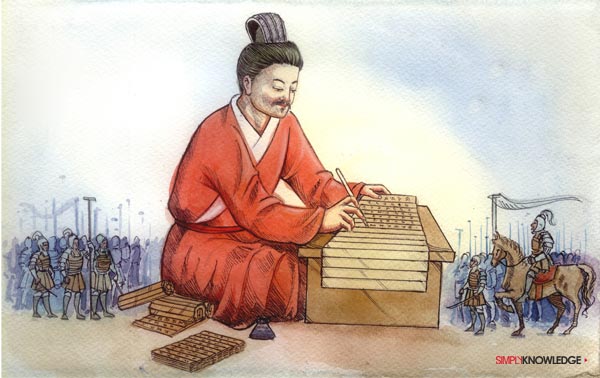

This book, found in the form of a manuscript, is the oldest known record on use of psychology in any form. The ‘Art of War’ is a masterpiece since it speaks about deploying fear of death, the element of surprise and various other strategies that would have a negative impact on the enemy morale while boosting the confidence of one’s own forces. It speaks about the qualities vital for a leader and the character of an ideal soldier and their thought processes that culminate into action, albeit in a battlefield.
The book almost entirely deals with psychology that can be broadly classified into two separate streams- War Psychology and Fear Psychology. Sun Tzu aptly uses the two sciences of thought to annihilate enemies of King He Lu.
Sun Tzu’s works clearly indicate he was a Taoist, since several of his writings such as the qualities and character of a military leader, soldiers, treatment of enemy combatants and strategies are based on principles of Taoism. Sun Tzu once said to King He Lu, when he was prodding for more battles for gaining larger swathes of land: “There is no instance of a nation benefitting from prolonged warfare.” This quote, oft repeated by later leaders, draws its origins from Taoist tenets against avarice. Sun Tzu’s quote came in context of massive human losses in battles, which he found horrific, when compared to territorial and material gains.
Sun Tzu instructed military leaders under his command saying: “Regard your soldiers as your children, and they will follow you into the deepest valleys. Look upon them as your own beloved sons, and they will stand by you even unto death...”- another clear indication of his Taoist inclinations.
Besides incorporating Taoist tenets, Sun Tzu also speaks about various essentials of warfare. Prime among these include the element of surprise, use of fire, espionage, morale of own and enemy troops, war drills and manoeuvres as well as use of deception for fooling the adversary to wrongly estimate troop sizes, movements, weaponry or distance. Sun Tzu emphasises the importance of topography and demographics of the battlefield. Above all, he speaks about the significance of military leaders gaining prior knowledge the inherent strengths and weaknesses of their troops and says: “If you know the enemy and know yourself you need not fear the results of a hundred battles.”

- Intelligence: “Of all those in the army close to the commander none is more intimate than the secret agent; of all rewards none more liberal than those given to secret agents; of all matters none is more confidential than those relating to secret operations.”
- Manoeuvres: “Be extremely subtle, even to the point of formlessness. Be extremely mysterious, even to the point of soundlessness. Thereby you can be the director of the opponent's fate.”
- Diplomacy: “When envoys are sent with compliments in their mouths, it is a sign that the enemy wishes for a truce.”
- Morale: “You have to believe in yourself.”
- Speed: “The quality of decision is like the well-timed swoop of a falcon which enables it to strike and destroy its victim.”
- Altruistic Patriotism: “The general who advances without coveting fame and retreats without fearing disgrace, whose only thought is to protect his country and do good service for his sovereign, is the jewel of the kingdom.”
- Smart Warfare: “To win one hundred victories in one hundred battles is not the acme of skill. To subdue the enemy without fighting is the acme of skill.”
‘The Art of War’ consists of 13 chapters. Each chapter deals exclusively with a single aspect of warfare. These chapters are:
- War Plans.
- Conducting War.
- Deploying effective strategies.
- Tactical advantage by positioning.
- Energy or strengths of troops.
- Deception and Reality.
- Military Manoeuvres.
- Rapid tactics and changes.
- Military discipline.
- Topography and demographics of a battlefield or hostile terrain.
- Nine various battlefield situations.
- The effective use of fire.
- Espionage and counter-espionage.
All writings in ‘The Art of War’ are based on psychology. In addition, the treatise also lays emphasis on spirituality in conduct of warfare while discussing the qualities ideal for a ruler, general, military commanders and soldiers.
‘The Art of War’ grossly outlived its author, Sun Tzu. The book featured as most vital in the curriculums

Archaeologists excavating an ancient tomb of a Han dynasty ruler in the Shandong Province of China made a startling find in April 1972: a collection of ancient texts written on bamboo strips. Befuddled, these scripts were handed for decryption to experts versed in ancient Chinese languages.
Their discovery was startling: One collection of these bamboo strips was Sun’s Tzu’s ‘The Art of War’ while the other set was ‘The Art of Warfare’, believed to be authored by Sun Bin- a purported descendant of Sun Tzu.
The find sparked a fierce debate among historians whether the later work, Sun Bin’s ‘The Art of Warfare’ was a plagiarized version of Sun Tzu’s ‘The Art of War’. And, it also opened another debate- that Sun Bin was indeed a descendant of Sun Tzu, as widely believed. The axis of contention was, no records exist about Sun Tzu’s marital life and hence, any claims over his lineage were ambiguous at best.
Regardless, it lay to rest myths since the finds conclusively proved that Sun Tzu and Sun Bin did exist and were not mythical figures, as believed in some quarters of historians.
However, further translations proved, Sun Tzu’s ‘The Art of War’ differs in some aspects with Sun Bin’s ‘The Art of Warfare’- which is incomplete since he writer was executed. Despite, both texts now figure as compulsory texts for soldiers of China’s People’s Liberation Army- the world’s largest land force. Several other countries worldwide use ‘The Art of War’ as essential material for military cadets and conscripts.
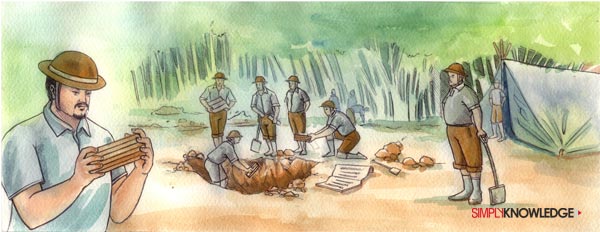

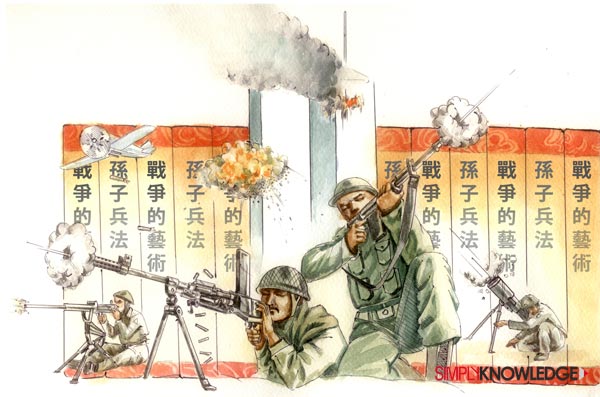
- War and Fear psychologies contained in Sun Tzu’s ‘Art of War’ are now utilized by militaries worldwide. Sadly, terror networks also use its principles to launch vicious attacks on their perceived adversaries. Some recent examples where Sun Tzu’s war and fear psychology were deployed:
- World War-II: The invasion of Poland on September 1, 1939, during which Nazi Germany’s armed forces effectively deployed ‘Blitzkrieg’ or ‘Lighting War’. Taking the Poles by surprise, Germany annihilated every resistance offered by the defenders.
- World War-II: The invasion of Normandy by Allied forces to liberate Europe from occupation by Nazi Germany. The assault, launched June 6, 1946 by air and sea took the Germans by surprise since they had falsely believed the Allies would invade from Pas de Calais in northern France. The Allies had used deception by building fake airfields and military camps in the UK. German spy planes captured images of fake aircraft, warships and other equipment which indicated the Allies would attack at Pas de Calais and hence left Normandy in southern France almost defenceless.
- Bangladesh Liberation War 1971: Fought between India and Pakistan on two fronts from December 3, 1971, the Indian Navy effectively executed Operations Trident, Python and Grand Slam by attacking Pakistan’s main harbour, Karachi. The Indians used speed and deception and the stealth of night to launch the attack.
- Iraqi occupation of Kuwait: On August 2, 1990, the small, defenceless State of Kuwait in the Arabian Gulf was overrun within hours by the powerful and battle-hardened army of Iraq. A counter-offensive aimed at ejecting the Iraqi forces was launched by a US-led coalition. Iraqis, knowing defeat was imminent, resorted to psychological warfare by using fire: Using the Scorched Earth policy espoused by Sun Tzu, fleeing Iraqi troops set scores of Kuwaiti oil wells ablaze, causing massive economic losses to that country.
- September 11, 2001: Known as 9-11, a group of terrorists from the Al Qaeda network hijacked and slammed civilian airliners into the World Trade Centre, New York and the US military headquarters, Pentagon, in Washington DC. The intention behind these terror attacks was to strike fear and disrupt the nation’s economy- both aimed at psychologically demoralizing US citizens and other communities worldwide.
- The Second Gulf War, March 20, 2003: The US-led coalition launched a ‘Shock and Awe” operation by bombarding Iraq with sea and air launched missiles, regardless of whether they struck civilian or military targets. The operation was aimed at psychologically demoralizing the Iraqi regime of Saddam Hussein and his troops.
Biography of Sun Tzu | 0 Comments >>
0 --Comments
Leave Comment.
Your email address will not be published. Required fields are marked.

